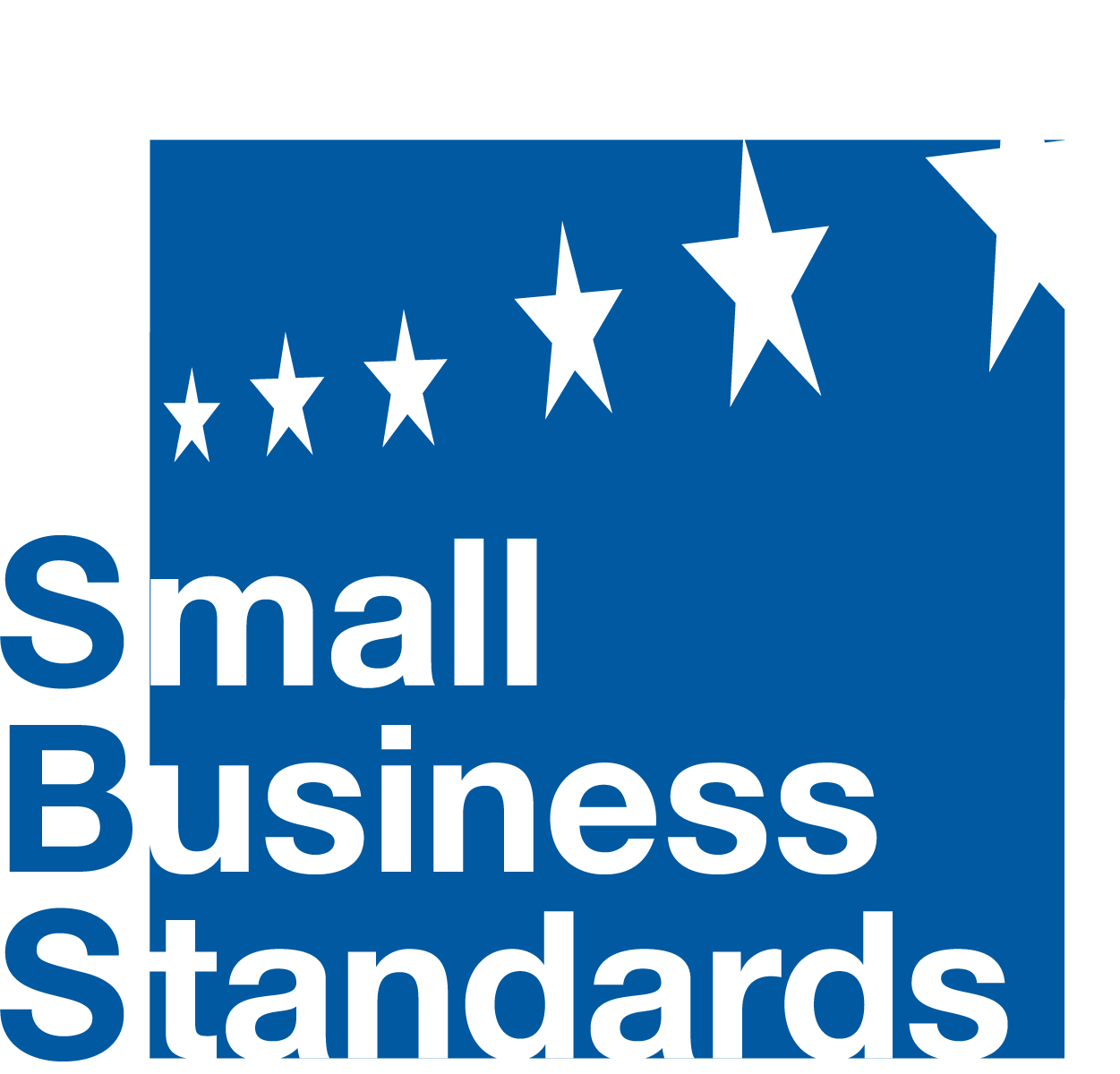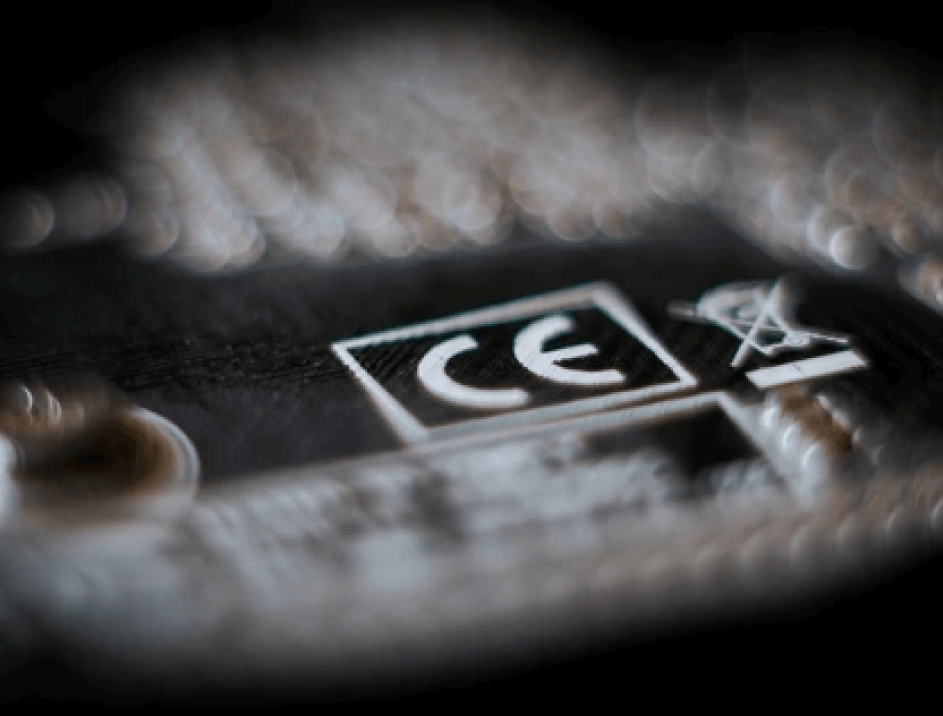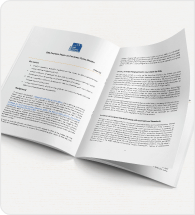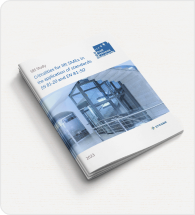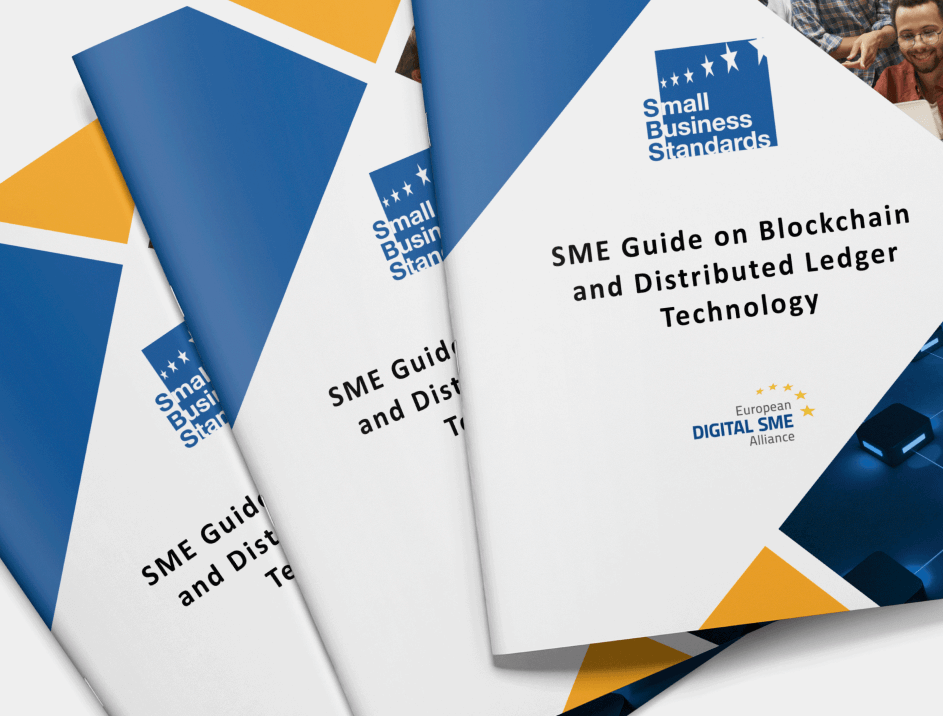Summary of SMEs needs regarding IFC compatibility
▪ Backward compatibility
– Backward compatibility should be mandatory over a very long period of time, for instance 10 to 20 years (the lifecycle of a bridge or of a road is more than 100 years)
– Non backward compatible revisions should follow a comprehensive ISO process with a deep analysis of all experts.
– Forward compatibility
▪ Forward compatibility should be mandatory over a period of time similar to the lifecycle of software, for instance 5 to 10 years.
-Compatibility perimeter
▪ The full content of IFC should be submitted to the same compatibility requirements. From a user’s point of view, an IFC revision is compatible or not. It is never partially compatible.
▪ IFC should support EU and national standards or regulations
Background
The Industry Foundation Classes (IFC) is the primary interchange format for the building sector, developed by buildingSMART International (bSI) and submitted to ISO for adoption. It is currently being revised to cover the needs of the rail, bridge, and tunnel industries. However, the pace of new versions of IFC is accelerating, and each new version is incompatible with the previous ones. This situation poses a significant challenge for SMEs as they may need to re-enter and redraw information into their software, which is time-consuming and costly. As the life cycle of built assets spans over 50 to 100 years, compatibility issues are fundamental. SMEs are interested in adopting new technologies that can help them deliver their services and remain competitive. For instance, smartphones were introduced in the mid-2000s, and today, they are widely used by SMEs for their business activities. However, when it comes to IFC, the situation is considerably different. Introduced in 2005 as the primary format for information exchange in the construction sector, IFC has struggled to gain widespread adoption by SMEs. According to the survey “Baromètre 2021” from the French “Plan BIM 2022”1 , only 6% of construction enterprises use IFC because it doesn’t meet their needs.
One of the major challenges that limit the adoption of IFC by SMEs is compatibility issues. Backward compatibility is the assurance that a software compliant with a new version of IFC will be able to read an old file. In contrast, forward compatibility guarantees that an older software compliant with an older version of IFC will be able to read a new IFC file without losing any functionality. Recognising the need for compatibility, it is also important to consider the value of keeping the IFC data schema dynamic and adaptable to accommodate evolving industry needs. This requires striking a balance between compatibility and the ability to introduce corrections and innovations in subsequent IFC revisions. The ability to address shortcomings and incorporate new features is crucial for the long-term viability and relevance of IFC.
When a user tries to read an IFC file with different version from the version of its software, three scenarios may occur:
• The IFC versions are fully compatible: the user will be able to work with its current software• The IFC versions are not compatible but the software vendor has implemented the version of the IFC file: in this case the user will be able to process the IFC file; however the burden of handling the different versions is transferred to the software vendor
• The IFC versions are not compatible and the software vendor has not implemented the version of the IFC file: the user will be able to process the IFC file only if he buys a new software from another vendor and learns how to use it buildingSMART International and the International Organization for Standardisation (ISO) have established a policy on IFC compatibility. It identifies two parts of the IFC standard: the schema, which describes the classes and some of their properties, and the property and quantity sets, which are not part of the schema. For instance, using the example of a door, the “door” class belongs to the schema, while its fire resistance characteristic belongs to the Property and Quantity sets.
In the ISO policy, backward compatibility is a strict requirement for the schema only; however, it is not mandatory for any revision of the standard. IFC4.3, which was communicated to be fully compatible, still has some backward incompatibility with the previous version. According to the ISO policy, forward compatibility is desirable for the schema only; however, it is not assessed. Finally, the backward and forward compatibility of Property and Quantity sets are not considered, and IFC4.3 introduced hundreds of incompatibilities in Property and Quantity Sets.
This current situation has significant consequences, as software compliant with older versions of IFC may not be able to read new revisions, leading challenges for SMEs to become more digitalised. Only a very few software vendors have fully implemented all revisions of IFC in their software and these vendors are all international and legacy vendors. Others implement only parts of the standard. Incompatibility of the standard is a huge barrier to entry for any startup software vendor.
Furthermore, the objective of the European Public Procurement Directive n. 24/2014 (EU) is to update the current public procurement regulations in the EU by, among others, encouraging the utilization of BIM and electronic communication, reducing bureaucracy, and facilitating entry for SMEs. As such, public authorities may request IFC in tenders, as long as competition is not distorted, or specific actors are not favoured. However, such a request can indirectly impact SMEs, who may own an IFC software which is incompatible with the requested IFC version, requiring them to either purchase new software or manually re-enter data into their software. As a result, public authorities should carefully consider the potential impact of requiring IFC and ensure that it does not create any unfair advantages for larger actors in the industry.
This position paper aims to highlight the needs of SMEs regarding IFC compatibility issues and provide recommendations to improve the situation.
SME users’ needs
Final users need to use IFC transparently without being concerned about IFC revisions. So, they need a complete compatibility between IFC revisions. The full content of IFC (schema, property sets and quantity sets) should be submitted to the same compatibility requirements. Backward compatibility should be guaranteed, either by the standard or by the software during the whole lifecycle of assets, i.e. during a century. IFC forward compatibility should enable the user to keep using his software as long as it fulfils its needs. It should not prevent him to work with a partner who uses a newer version of IFC.
SMEs that use IFC require compatibility between different software platforms to ensure seamless data exchange across the project life cycle. Currently, some files that claim to be IFC compatible are not practically IFC compatible, causing significant issues with data exchange for SMEs. Although IFC software certification exists and helps guarantee that an IFC file generated by one software can be processed by another one, it does not currently provide an effective solution. The costs associated with the certification process are not proportional to the level of assurance they offer. Moreover, certification is becoming increasingly complex due to the new functionalities that each revision brings. Certification of subsets of IFC dedicated to specific use cases, such as HVAC certification in the EU level, could provide a solution to this problem.
SME software providers’ needs
SME software providers need a complete IFC compatibility (schema, property sets and quantity sets) over a very long period of time to minimize the costs of supporting successive incompatible versions of IFC over decades. Property and quantity sets are important to all software providers that use them (e.g. a seismic calculation software needs the compatibility of the “Address” property, a fire safety checker software needs the compatibility of the “Fire reaction” property, etc.).
SMEs understand that IFC revisions cannot be fully compatible for ever; sometimes some corrections or some innovations need to break compatibility. However, these breaches should be rare, concentrated in the same revisions and should be deeply discussed with all ISO experts.
An example that could inspire the construction sector is the use of Straight Through Processing (STP), used in the banking industry to streamline operations and reduce processing time. Straight Through Processing is a digital process used to automate the flow of information between systems, without requiring manual intervention. While the construction industry focuses more on interoperability and data exchange using the IFC format, software providers could implement STP to meet end users’ needs. By combining STP with IFC interoperability, the construction sector can create a seamless data flow, eliminating the need for manual data entry and reducing errors that can occur during data transfer between various systems and applications.
Furthermore, properties must be compatible from one revision of the IFC to the next, but they must also be compatible with EU and national standards or regulations. This is not the case today: as an example, fire safety in Europe is described with two properties (“Fire reaction” and “Fire resistance”); IFC includes only one, the property “Fire rating”, and proposes no guidelines on how to us it. A European data dictionary compliant with EN ISO 12006-3 and EN ISO 23386 could solve these problems.
Conclusion
To prevent future versions of IFC from being incompatible with existing ones, we propose the following solutions:
• We recommend ISO/TC59/SC13/JWG12 to initiate a Technical Report (TR) regarding IFC compatibility policy to address the current situation.
• We anticipate that this TR should probably recommend to update the agreement between ISO/TC59/SC13/JWG12 and bSI, in order to limit the fast track process to compatible revisions.
• We request CEN to launch coordinated efforts to create an EU dictionary that is fully compliant with EN ISO 12006-3 and EN ISO 23386.
The adoption of IFC by SMEs is critical for the building sector’s success, and compatibility is one of the major challenges that limit the adoption of IFC by SMEs. In addition to the proposed solutions, it is crucial to encourage the inclusion of SMEs and their needs in the development of IFC to reflect a balanced approach. SMEs represent a significant portion of the building sector, and their input in the development of IFC can help create a more inclusive and comprehensive standard. By addressing the compatibility issues and including SMEs in the development of IFC, we can create a more accessible and widely adopted standard that benefits the entire sector. If the proposed solutions are implemented, we believe that SMEs will face fewer compatibility issues and will be able to adopt IFC more easily. This will not only benefit the SMEs but also contribute to the success of the building sector as a whole.
